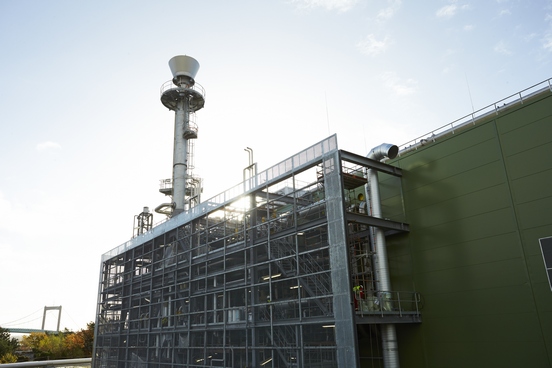With roots stretching back to the days of heavy industry, the Swedish city of Gothenburg has successfully transitioned from an industrial heartland to a global climate leader.
In 2013, the City of Gothenburg became the first city in the world to issue green bonds, which enable it to borrow money for investments that benefit the environment. More than 75% of proceeds from green bonds issued between 2013 and 2015 are used by the city to fund climate change projects that promote the transition to low-carbon and climate-resilient growth.
Green bonds issued by cities and businesses are a powerful way to mobilize capital for climate change related investments because, as a fixed income instrument, green bonds leverage the global fixed income (bond) markets, which are a highly liquid source of capital for investment.
Key facts
- In 2013, Gothenburg issued its first green bonds for SEK 500 million. The city made a second foray into the green bonds market in 2014 with a SEK 1.8 billion issuance, a third issuance for SEK 1 billion in 2015, and a forth issuance for SEK 1 billion in 2016.
- To date, the city has been able to raise a total of SEK 4.36 billion via the financial markets.
- Gothenburg’s green bonds are the first financial product that allows mainstream investors (about 98% of the capital market) access to climate financing at no additional cost.
The problem
The starting point for the city’s green initiatives goes back to 1987, when the Minister for the Environment called parts of the city “hell’s waiting room.” The response was to set up a special delegation – known as Gothenburg’s Environmental Project – to get to grips with the problem. This has led to the Gothenburg of today – a city offering world-class solutions in the fields of energy, sustainable urban development, chemistry, waste and transport.

The solution
Gothenburg set high environmental and climate goals, which then led the city to decide to also let its finances be part of the solution. Its green bonds are a key part of the strategic work it does to reach its environmental and climate goals.
Green bonds are a financial tool designed to reduce the impact of climate change. The initiative comes from the World Bank, which launched these bonds in 2008 as a part of the process of stimulating and coordinating the activities of the public and private sectors aiming to tackle climate change.
So far, green bonds constitute a small part of the total bond market, but they are growing at an explosive rate. In 2014, these bonds were issued to a value of USD 20 billion. In addition, more and more actors are now issuing green bonds. As of August 2016, these bonds value USD 46 billion.
Offering a sustainable alternative to investors without compromising their return on investment has attracted the attention of new investors on global capital markets. These investors have the financial muscle to support green projects and allocate the funds needed to invest in projects that are good for the environment and climate.
The City of Gothenburg uses its green bonds to fund projects that target: (a) mitigation of climate change, including investments in low-carbon and clean technologies, such as energy efficiency and renewable energy programs and projects; (b) adaptation to climate change, including investments in climate-resilient growth; or, (c) to a smaller extent (up to a maximum of 20%) projects which are related more broadly to sustainability rather than directly related to climate change.
Helping the planet
So far, Gothenburg’s green bonds have supported investments in various climate solutions, including zero-emission electric cars and a biogas project. The biogas facility’s capacity is now 20 MWh, which means up to 36,000 tonnes of CO2 emissions can be avoided each year.
Another investment is the project CELSIUS, which promotes district heating. One of its achievements is the world's first connection of a passenger ship, Stena Danica, in regular service to a heating grid, using a new type of heat exchanger when the ship docks. The ship is also provided with electricity when docked. This investment is estimated to reduce CO2 emissions by as much as 60%.
Helping people
This activity promotes and enhances the city’s finances. The green bonds spread the financial risks so that the city has a solid financial base that frees resources that can be used in activities that benefit all of Gothenburg’s citizens.
These are just a few of the many projects have been financed in Gothenburg by green bonds:
- Lackarebäck waterworks and cleaning filters – water treatment using ultrafiltration, using the largest ultrafilter ever built in Scandinavia.
- GoBiGas – large-scale production of biogas by gasification.
- Electric vehicles for the city’s administrative offices and companies.
The projects financed by green bonds aim to contribute to Gothenburg reaching its environmental targets.
Spillover effect
Any city, institution, country or company in the world with loans and invests in climate projects could issue a green bond. The city of Gothenburg tries to help other cities, municipalities and regions to the largest extent possible by being transparent and sharing information and knowledge. One way the city contributes to knowledge about the green bond market has been as a frequent speaker at international conferences, including at COP20 and COP21.
The city of Gothenburg’s green bond program has served as a model for other cities, including cities in the EU as well as in developing and emerging economies that wish to learn from and emulate the type of green bond program that Gothenburg has put in place.




Images owned by the activity partners, all rights reserved.